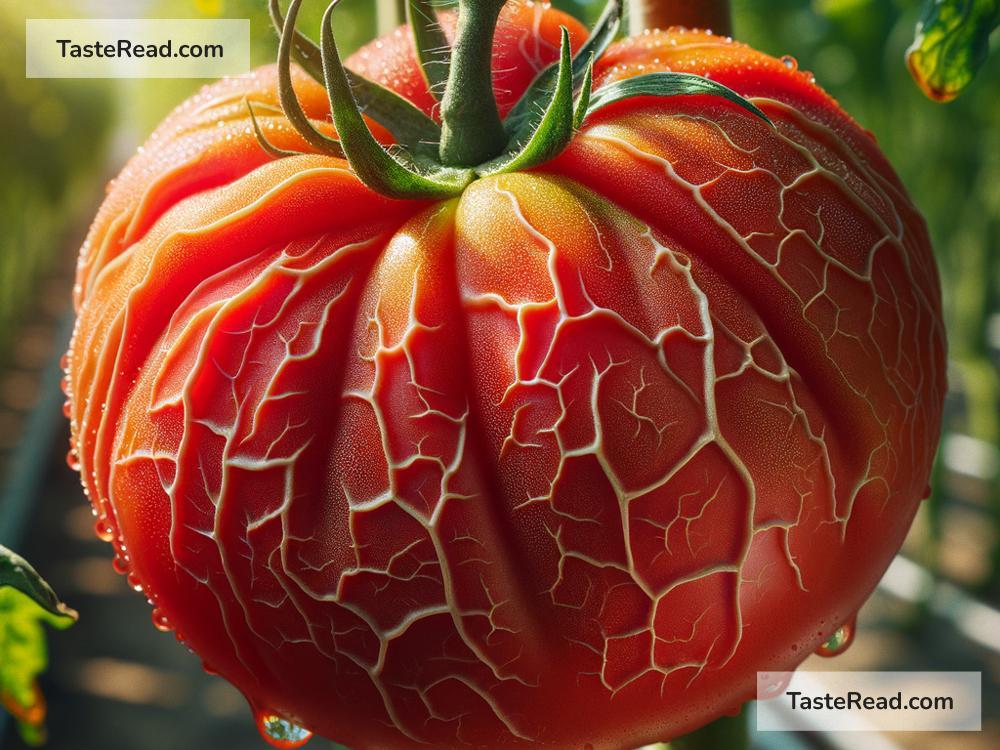The Impact of Plant Stress on the Flavor of Fruits and Vegetables
When you bite into a juicy tomato, enjoy the crisp crunch of a carrot, or savor the sweetness of a ripe strawberry, you’re experiencing the result of months of hard work by the plant that produced it. What many of us don’t think about is the fact that plants, like humans, experience stress. And this stress can have a significant impact on the flavor of the fruits and vegetables they produce.
But what is plant stress, and how does it affect taste? In this article, we’ll explore what plant stress is, the different types of stress plants face, and how this stress can change the way our fruits and veggies taste.
What Is Plant Stress?
Plants, although they don’t have nerves like humans, respond to challenges in their environment. These challenges—called “stress”—can be things like too much sunlight, not enough water, pests eating their leaves, or poor soil conditions. Just like humans might get grumpy or tired when stressed, plants also react to their stress.
When plants are stressed, they try to adapt and survive by making changes to how they grow, how they use energy, and even how they produce chemicals. These chemical changes, in turn, can influence the flavor of the fruits and vegetables. Depending on the type of stress, this can make produce sweeter, sourer, spicier, or even bitter.
Types of Plant Stress
There are two major types of plant stress: abiotic stress and biotic stress.
- Abiotic Stress
Abiotic stress comes from non-living factors, including: - Water Stress: Plants get stressed when they don’t have enough water (drought conditions) or too much water (flooding).
- Temperature Stress: Very hot or very cold weather can make plants struggle to grow.
- Sunlight Stress: Too much direct sunlight can scorch plants, while too little light can make it hard for them to make food through photosynthesis.
-
Soil Issues: Poor soil with little nutrition or minerals can stunt plant development.
-
Biotic Stress
Biotic stress comes from living things, like: - Pests: Insects, like aphids or caterpillars, feed on plants and cause damage.
- Diseases: Bacteria, fungi, and viruses can cause disease in plants, making them look wilted or weak.
- Competition: Plants that have to share space, sunlight, and water with weeds or other plants can experience stress.
How Plant Stress Impacts Flavor
Plant stress doesn’t just make plants grow differently—it changes the chemicals inside them. These chemicals are responsible for the taste and aroma of fruits and vegetables. Here’s how different types of stress impact flavor:
- Water Stress
Some of the tastiest fruits and vegetables come from plants that experience moderate drought conditions. This is because when there’s less water, plants focus their energy on producing sugars and other compounds to survive. For example: - Tomatoes grown in drier conditions tend to be sweeter and have a more intense flavor.
- Grapes for wine production often benefit from mild water stress because it makes them richer in sugar and flavor.
On the other hand, too much water can dilute the flavors in fruits and veggies, making them bland or watery.
-
Temperature Stress
If the temperatures are cooler, plants often produce more sugars to protect themselves from the cold. This is why many people say that carrots harvested after the first frost are sweeter—they adapt to cold stress by creating more sugar to keep freezing at bay. -
Sunlight Stress
Too much or too little sunlight can also impact flavor. Plants that experience high sunlight often produce more antioxidants, which can give fruits like berries a slightly tangier flavor. These antioxidants protect the plant from sun damage but also contribute to taste. -
Pest and Disease Stress
When plants face attacks from pests or diseases, they produce chemicals to defend themselves. Sometimes, these chemicals are bitter or spicy, which is why stressed leafy greens like arugula or kale can taste slightly more peppery or bitter than usual. -
Soil Stress
Poor soil conditions often force plants to make the most of their resources, and this can result in more intense or concentrated flavors. Herbs like thyme and rosemary grown in harsh soil conditions tend to have stronger aromatic oils, giving them a more powerful taste.
Balancing Stress for the Best Flavor
Believe it or not, farmers, gardeners, and scientists are aware that stress can improve flavor. They often try to find the right balance when growing food. While too much stress can harm the plant or reduce yields, a little stress can lead to fruits and vegetables with richer, sweeter, or more complex tastes. For example:
– Wine grapes are often intentionally grown in slightly stressful conditions to enhance their sweetness and flavor quality.
– Farmers sometimes grow chili peppers in hotter climates because heat stress increases the pepper’s spiciness.
Final Thoughts
In the end, plant stress isn’t always a bad thing. While extreme stress can damage a plant or lead to smaller harvests, mild stress can enhance the flavor, making fruits and vegetables more enjoyable to eat. The next time you bite into a sweet carrot or tangy berry, remember that a little hardship in a plant’s life might have made that produce taste so delicious.
Understanding the relationship between plant stress and flavor encourages us to appreciate the natural processes and challenges that contribute to the food we eat. Whether you’re growing your own garden or picking fresh produce from the store, remember that stressed-out plants might just be nature’s way of making your food taste better!


